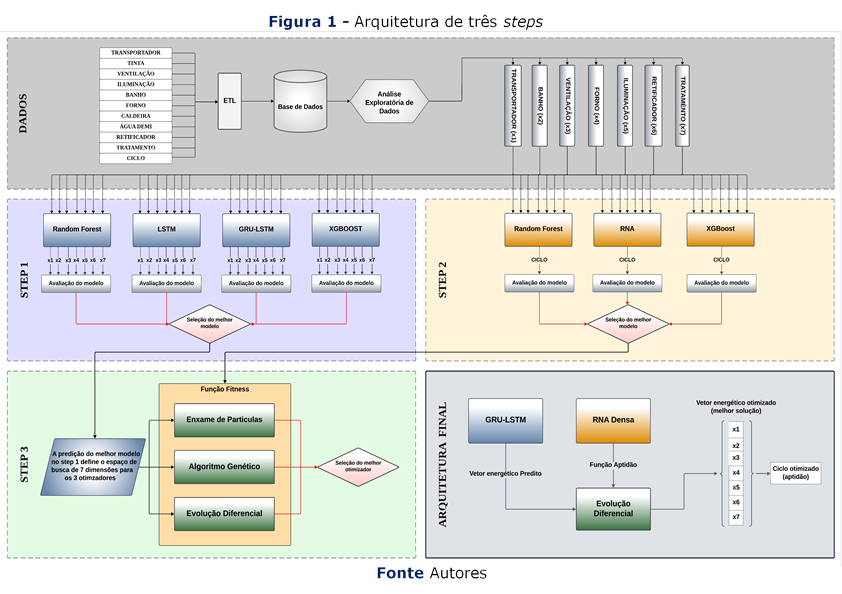Uso de Modelo Híbrido de Aprendizado de Máquina e Otimização por Meta-heurística para Predição de Consumo de Energia Elétrica e Produtividade em Pintura Automotiva
##plugins.themes.bootstrap3.article.main##
Resumo
Este artigo busca prever o consumo energético (CE) e maximizar a produtividade na pintura automotiva, utilizando uma abordagem que combina seleção de variáveis, modelos híbridos, hiperparâmetros destes modelos e otimização por meta-heurística em uma arquitetura com 3 steps. Os processos de pintura automotiva apresentam variáveis em forma de séries temporais que descrevem o histórico do CE. No step 1, escolhe-se o melhor modelo de aprendizado de máquina (RF, LSTM, XGBoost e GRU-LSTM) para prever séries temporais do CE em t+1. No step 2, avalia-se os modelos RF, XGBoost e RNA Densa para selecionar o melhor preditor de quantidade de veículos produzidos (ciclos). No step 3, seleciona-se a melhor meta-heurística entre GA, DE e PSO para otimizar o CE previsto pelo melhor modelo do step 1, usando como medida de fitness o melhor modelo do step 2. A arquitetura final reduziu o CE em até 16% e aumentou o ciclo em 127%, usando os modelos GRU-LSTM no step 1, RNA Densa no step 2 e DE no step 3. Os resultados ressaltam a oportunidade de uso da abordagem proposta para otimizar o CE e a produtividade na pintura automotiva.
Downloads
Não há dados estatísticos.
##plugins.themes.bootstrap3.article.details##
Como Citar
Oliveira, R., Limão Oliveira, R. C., & Maciel, A. M. A. (2024). Uso de Modelo Híbrido de Aprendizado de Máquina e Otimização por Meta-heurística para Predição de Consumo de Energia Elétrica e Produtividade em Pintura Automotiva. Revista De Engenharia E Pesquisa Aplicada, 9(3), 35-44. https://doi.org/10.25286/repa.v9i3.2809
Seção
Engenharia da Computação


